We took a fantastic private Bosphorus cruise from Istanbul to the Black sea and returned that same evening. The cruise was fantastic and provided a seaside view of many historic mosques, bridges, palaces and castles along the way. We got to see it all in excellent light. Therefore, I was able to get some great photos. I have inserted them here along with information about the landmarks we observed during our Bosphorus cruise.
The Bosphorus Strait connects the Sea of Marmara with the Black Sea. Additionally, it runs directly through the iconic city of Istanbul and also serves as the dividing line between Asia and Europe.
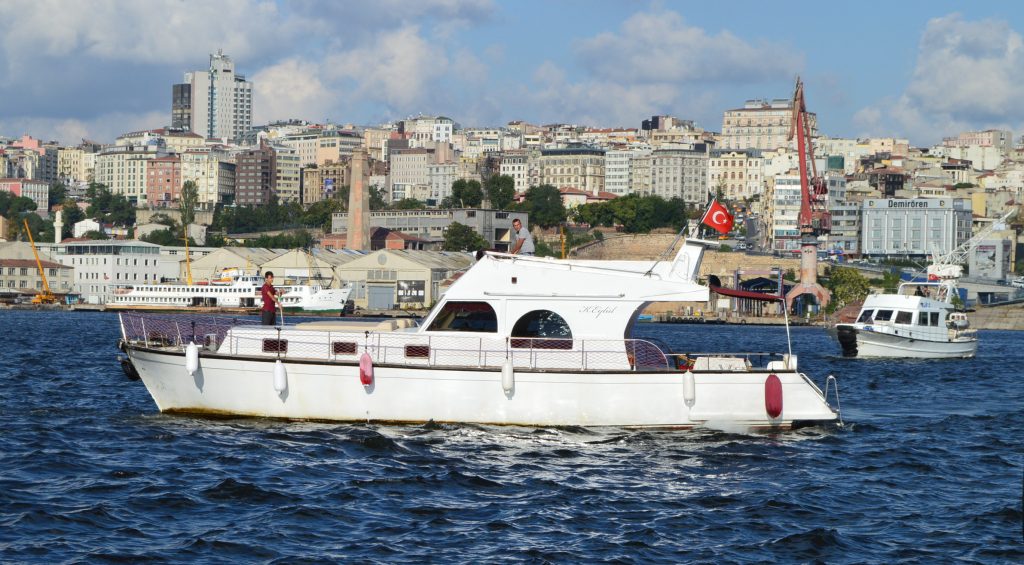
Yeni Camii (New Mosque)
The Yeni Camii is also known as the “New Mosque” in English. This Ottoman Imperial Mosque is located on the southern side of the Golden Horn in Eminonu quarter of Istanbul. Additionally, it sits right on the southern end of the Galata Bridge.
This was the first significant attraction we encountered as we were exiting the Golden Horn into the Bosphorus Strait. It was a great way to begin our afternoon cruise.
The New Mosque has a mixed history shrouded with the intrigues of the Ottoman court. Additionally, the location was controversial because it was to be built in the Jewish section of Istanbul.
There were also budgetary constraints and political infighting which would make matters even more complicated. As a result, construction was begun in 1597 and halted soon afterwards. Unfortunately, construction would not be restarted until 1660 and it was finally completed in 1665.

Dolmabahce Palace on Bosphorus Cruise
After passing the Yeni Camii we exited the Golden Horn waterway and entered the Bosphorus Strait going north. The next iconic landmark on our Bosphorus cruise would be the Dolmabahce Palace on the European side of Istanbul.
The Dolmabahce Palace glows with a grand opulence that was bought with 35 tonnes of gold! That is correct, the cost of construction was 35 tonnes of gold which is equivalent to 1.5 Billion US dollars today.
Unfortunately, the grand aspirations of the Sultan who ordered the construction would eventually bankrupt the Ottoman Empire. Indeed, the cost of the Dolmabahce Palace was equal to one quarter of the annual tax revenue for the entire Ottoman Empire. Nonetheless, the Ottoman Sultan Abdulmecid I ordered construction to begin in 1843 and it was completed in 1856.
The grand palace is impossible to miss on the shores of the Bosphorus. The palace grounds stretch for 600 meters and cover a total area of 45,000 square meters. The palace is well equipped with 285 rooms, 68 toilets, 46 halls and 6 Turkish baths (hamam).
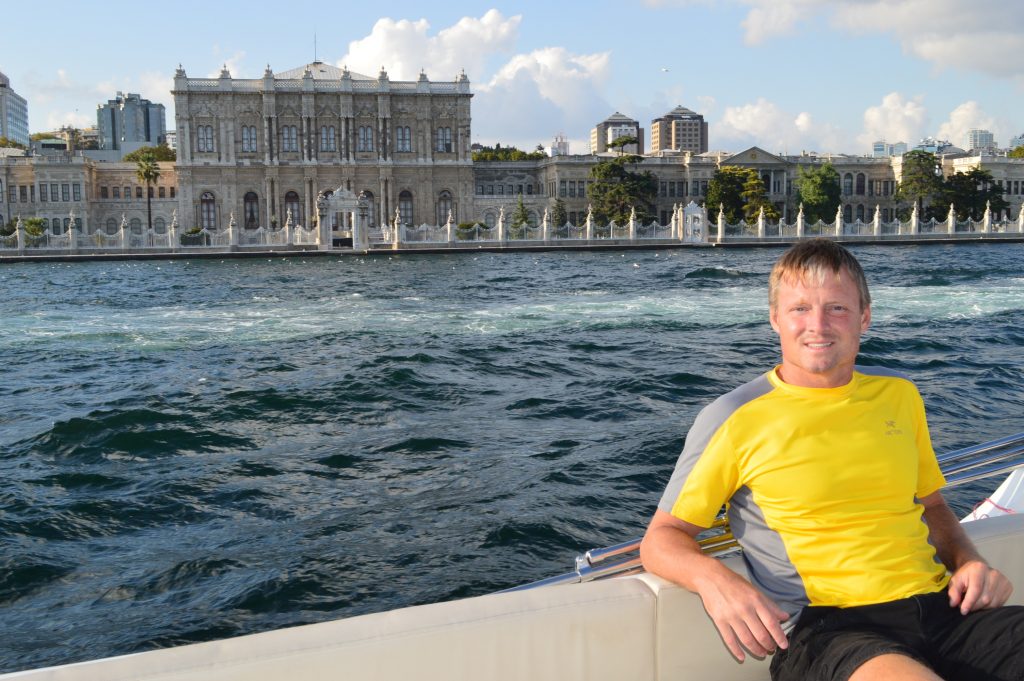
Most Famous Resident at Dolmabahce Palace
Last but not least, the founder of the modern Turkish Republic Mustafa Kemal Ataturk stayed in one of the rooms at the palace. He spent the last days of his life there and the clock in his room is still set to the time he died at 9:05 AM on November 10, 1938. Every year on November 10, all of Turkey comes to a stand still at 9:05 AM to pay respects to the founding father of the republic.
Ortakoy Mosque Landmark on Bosphorus Cruise
The next iconic landmark on our Bosphorus cruise would soon make its appearance. This Bosphorus landmark was also the brain child of Sultan Abdulmecid I. As a result, visitors can appreciate the same baroque style architecture and opulent design. It is called the Ortakoy Mosque and it is located at the Ortakoy pier square waterfront which is one of the most popular locations in Istanbul.
The Sultan ordered the construction to begin in 1854 and it was completed 2 years later in 1856. Additionally, it was built by the same Armenian architect who oversaw the design of the nearby Dolmabahce Palace. The Ortakoy Mosque is also known as the “Ortakoy Camii” in Turkish.
Additionally, the mosque sits on the western side of the modern “15 July Martyrs Bridge” known unofficially as the Bosphorus Bridge. The citizens of Istanbul appreciate the contrast because it blends the architecture of the modern bridge with the antiquity of the mosque. The new name of the bridge commemorates the soldiers who gave their lives to hold the bridge during the attempted military coup of July 15, 2016.
The Bosphorus Bridge is one of three suspension bridges that cross the Bosphorus Strait and connect Europe with Asia.

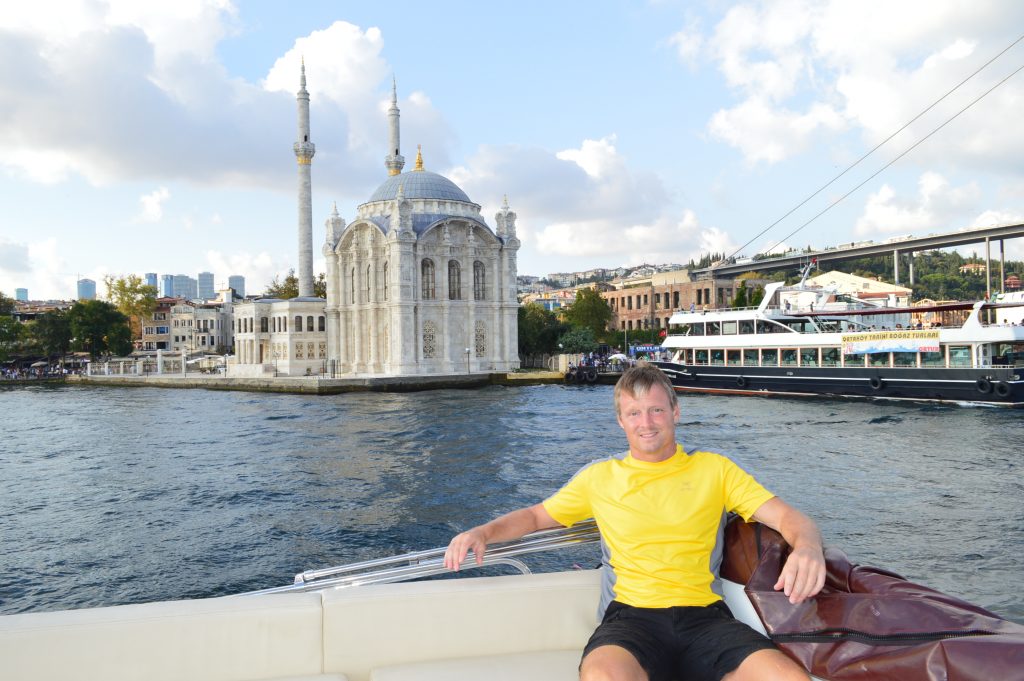
Rumeli Fortress on Bosphorus Cruise
The Rumeli Fortress is a European style castle located on the western side (European side) of the Fatih Sultan Mehmet Bridge. The Rumeli Fortress was built in 1452 by the Sultan Mehmed II who intended to use it to conquer Constantinople.
Its location was at the narrowest point on the Bosphorus Strait directly across from the Anatolian Fortress. Used in unison, the two castles enabled the sultan to blockade the Bosphorus Strait and control the grain supplies that were in route to Constantinople from the Black Sea. As a result, the defenses of Constantinople were severely impaired and it eventually fell under the control of the Ottomans.
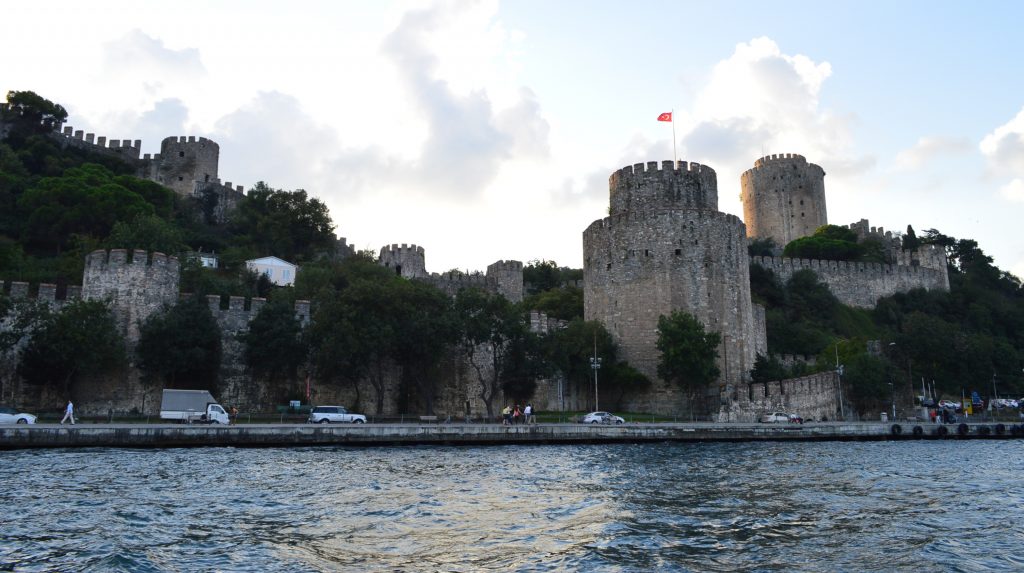
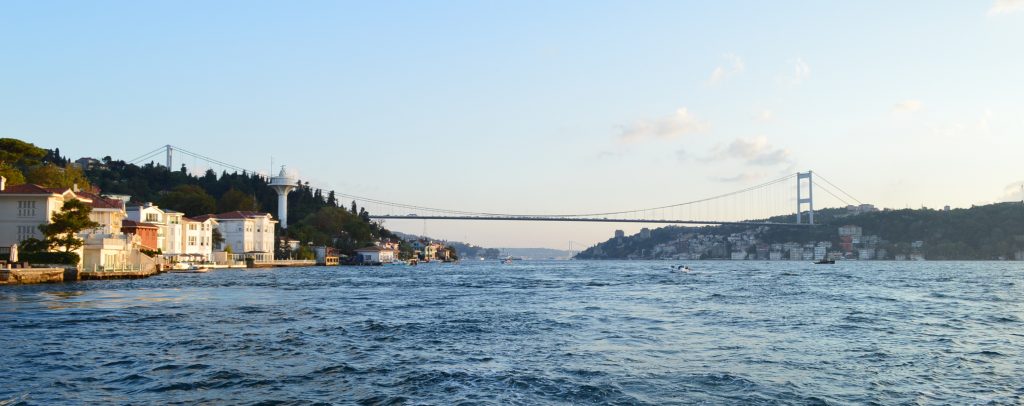

Additional Highlights of Bosphorus Cruise:
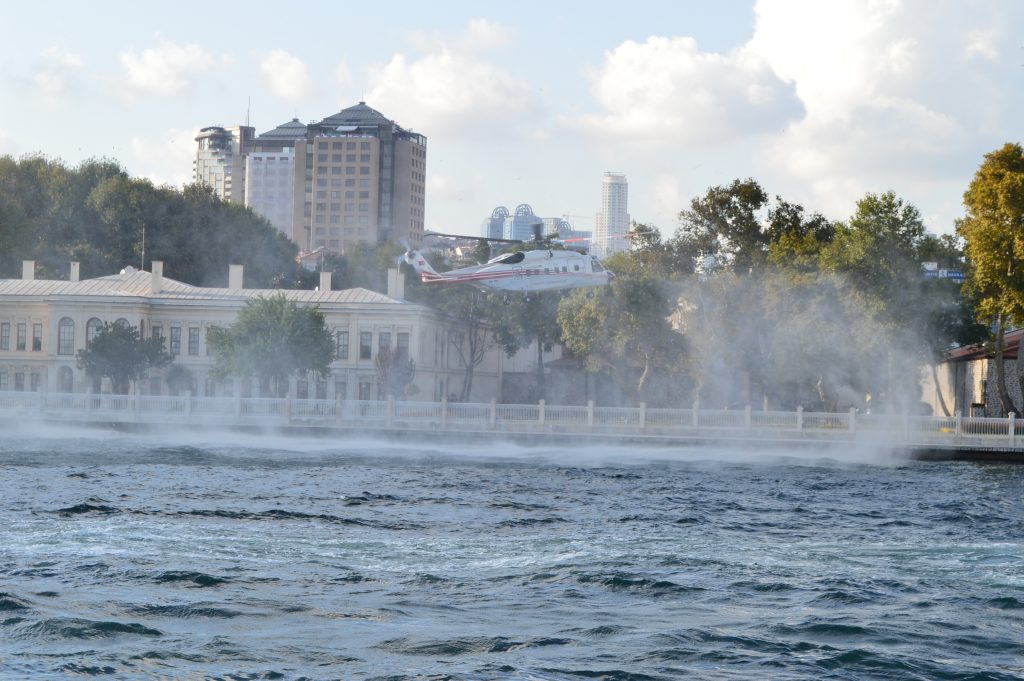

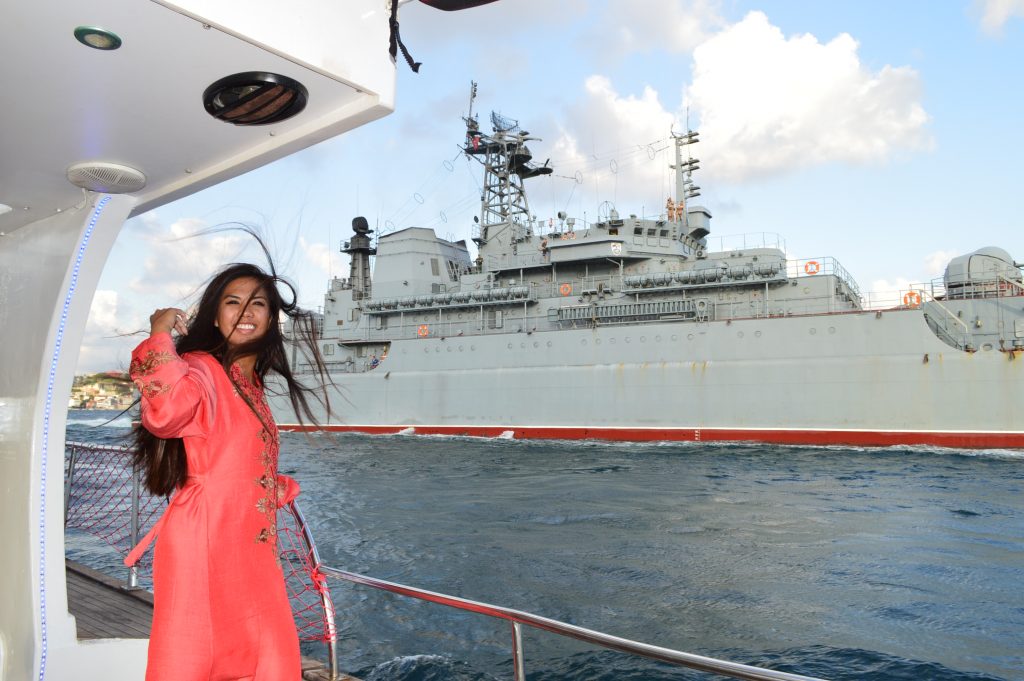
Recommended Turkey Travel Posts
Don’t miss the Basilica Cistern
See the Istanbul Skyline from Galata Tower
Ancient Ephesus on the Ionian Coast

